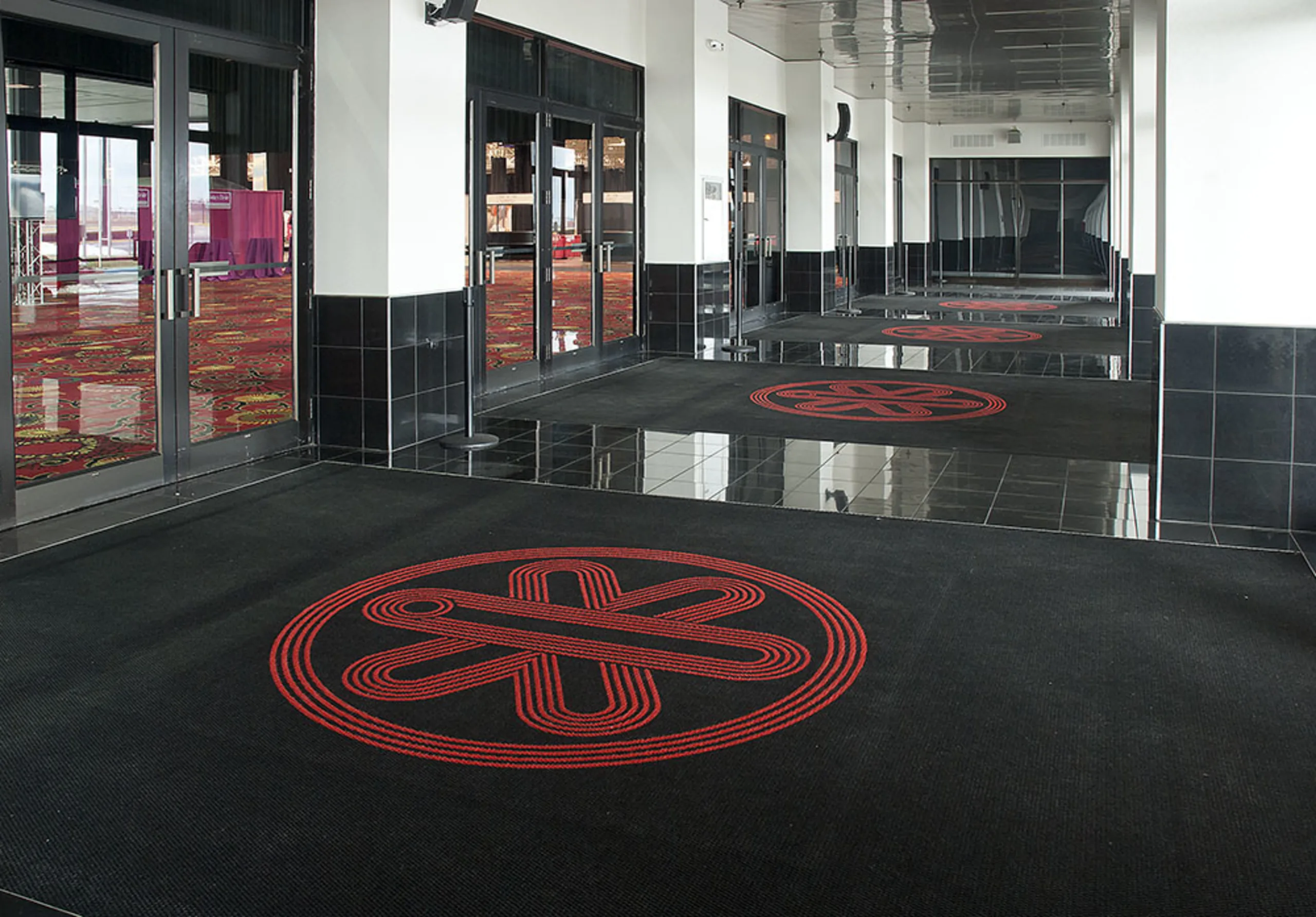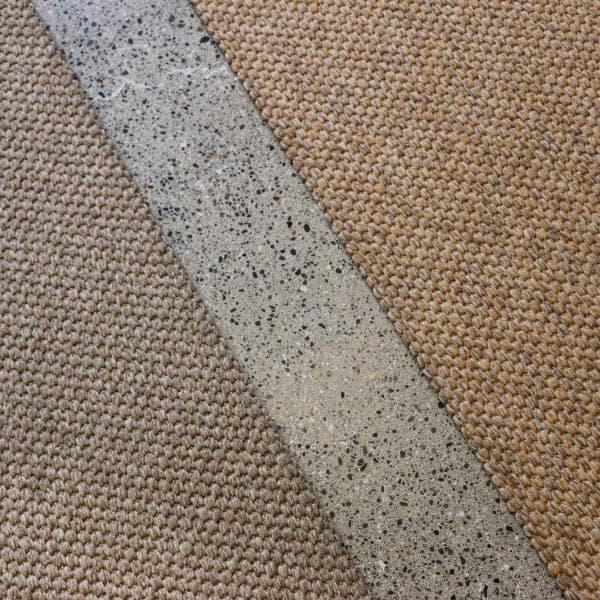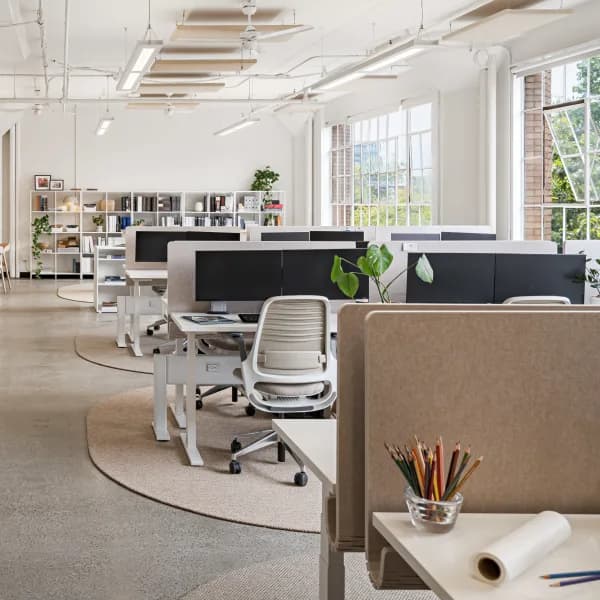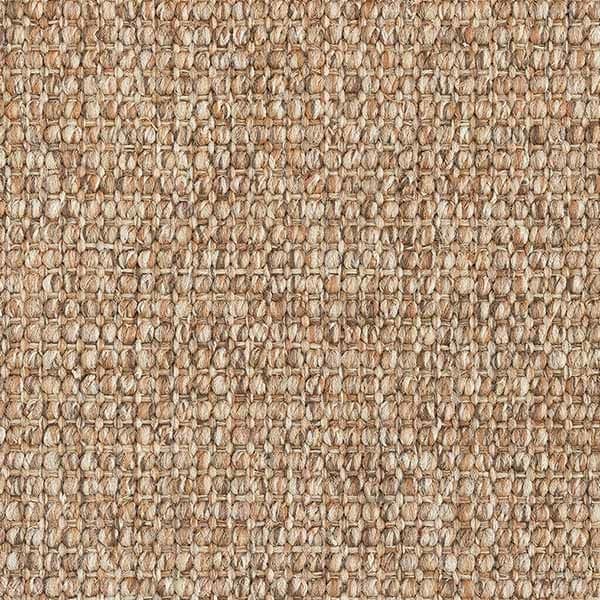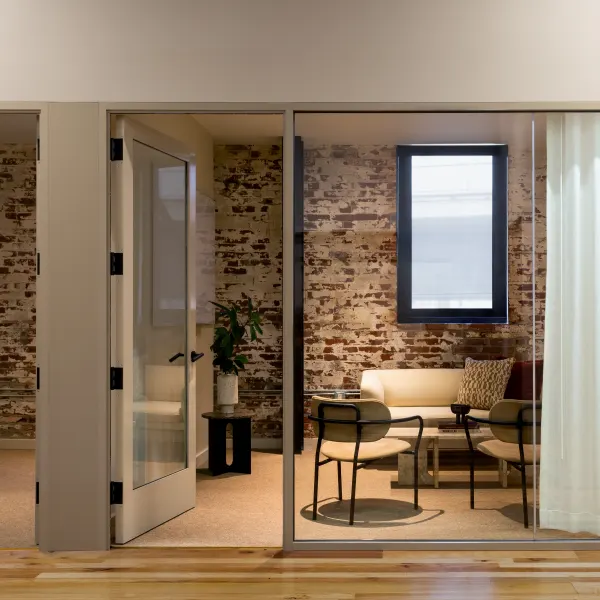Commercial Rug Sizing Guide
Area rugs in commercial settings like lobbies and offices add a visual focal point, soften the overall feel of a space, and help diminish noise.
Below, learn about specifying a rug that meets the needs of your space and see the most common layouts.
image: Maya Wave | licorice
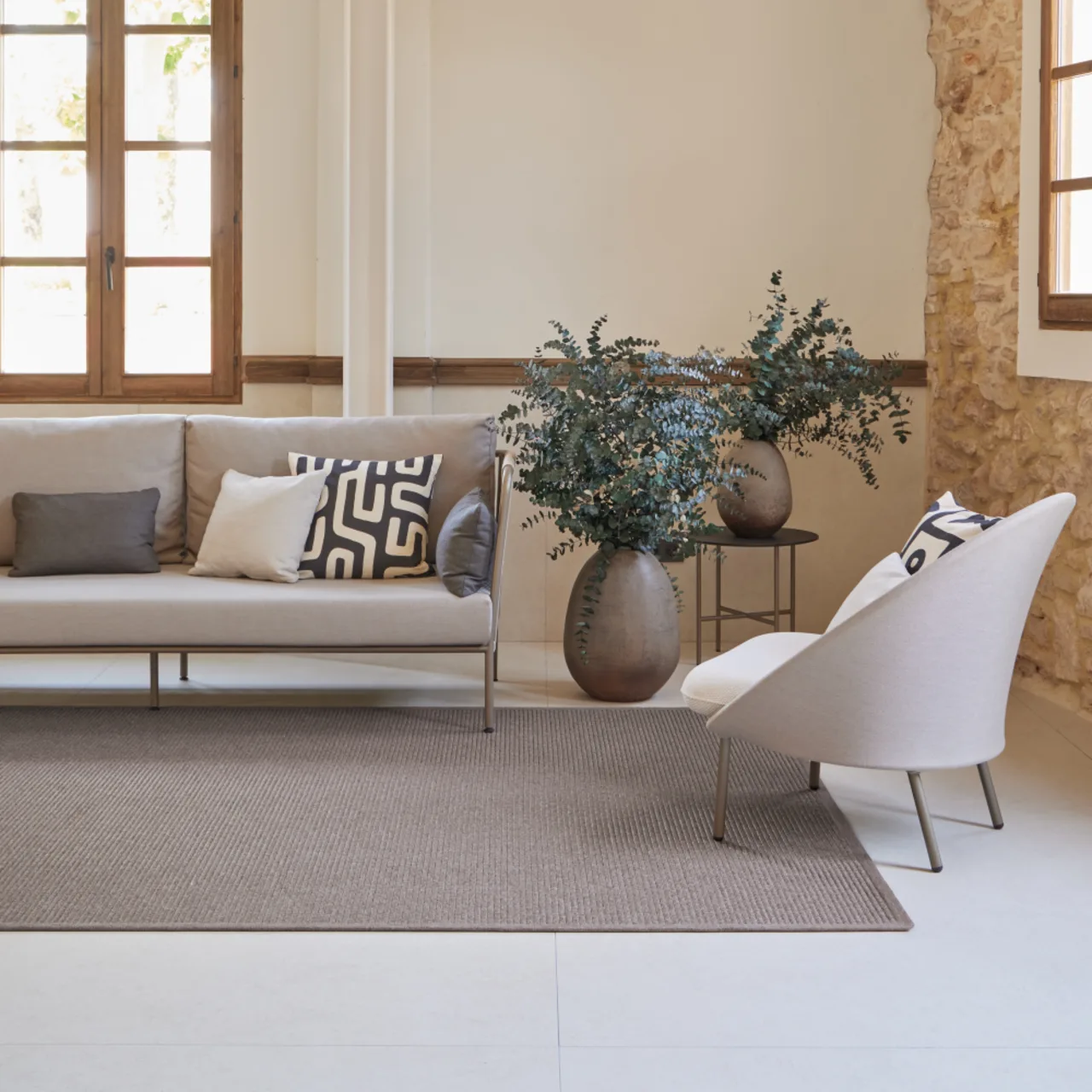
Acoustic Performance
Rugs help reduce noise in commercial spaces like lobbies, offices, conference rooms, and corridors. Large rugs cover a lot of real estate, soften sound and reduce echos, thereby creating a more comfortable environment. Interested in rugs that help with acoustics? Head over to Office Environments for ideas.
Brand Identity
A rug is a great way to broadcast a brand identity or unique style. Sturdy walk-off mats greet customers in entrances and can be customized to include logos and business names. Organic-shaped rugs from SynSisal® or EarthSISAL™ add an effortless, unique look and define spaces like reception or seating areas.
Budget & Lifecycle Costing
When budgeting for floor finishings or when its time for a remodel, area rugs are easier to replace than a wall-to-wall installation. Think about the initial cost but also the expected lifespan and replacement intervals for long-term value in commercial projects.
Simplified Planned Maintenance
Area rugs are easier for building maintenance teams to manage—they can be spot-cleaned, lifted for deep cleaning, and typically dry faster than wall-to-wall installations. Unlike fixed carpeting, rugs can also be rotated periodically to minimize visible wear in high-traffic zones. This flexibility reduces long-term maintenance costs and keeps spaces looking fresher for longer.
Things to Consider
It should go without saying that a rug in a commercial or public setting must meet the needs of the space as well as local building and safety regulations. Specifiers should select contract grade, durable materials that:
Meet fire safety standards (learn more about carpet classifications here)
Have built-in systems that resist staining as well as fading from UV light
Stand up to regular, heavy foot traffic
Are easy to maintain and clean
Have short, tight face yarns and a low pile
Need help finding the right material for your project? We have multiple resources, including The Best Materials for Commercial Rugs & Carpet and Heavy Duty Rugs For High Traffic Areas
ADA Compliance
ADA accessibility laws require that the final rug height—including any padding, backing, pile height, and border material—be less than 1/2 inch (13mm). Keep this is mind when selecting the rug material (what is the pile height?) and the border finish.
Secure the Rug
A rug in a contract setting must be secured by large pieces of furniture, adhered to the subfloor with carpet tape, or have a non-slip rug pad underneath. Also, a busy thoroughfare is not the place for a small area rug—small rugs by nature weigh less and are more likely to shift and move. Instead, opt for the biggest, low-profile rug that will fit the space.
Rug Borders
How a rug is finished around the edges can impact pile height and potentially conflict with ADA accessibility laws and/or cause a tripping hazard. For example, a bespoke finish like a braid might be too thick, whereas a serged edge or the Infinity Edge is stylish and meets ADA requirements. Learn more about the Infinity Edge here. Additionally, cloth borders may wear out or soil earlier than the rug itself, compromising the rug's aesthetics and integrity.
Castor Chairs on Rugs
Not only should the rug material be approved for castor chair use, be sure that the rug is large enough for office chairs to move about easily without running off the rug. Find styles that are suitable for castor chairs here.
Common Applications
Reception Areas & Lobbies
Reception areas and lobbies should be welcoming and easy to navigate. Area rugs create an inviting space, unify seating areas, and guide foot traffic.
image: FINGERS CROSSED | terrazzo
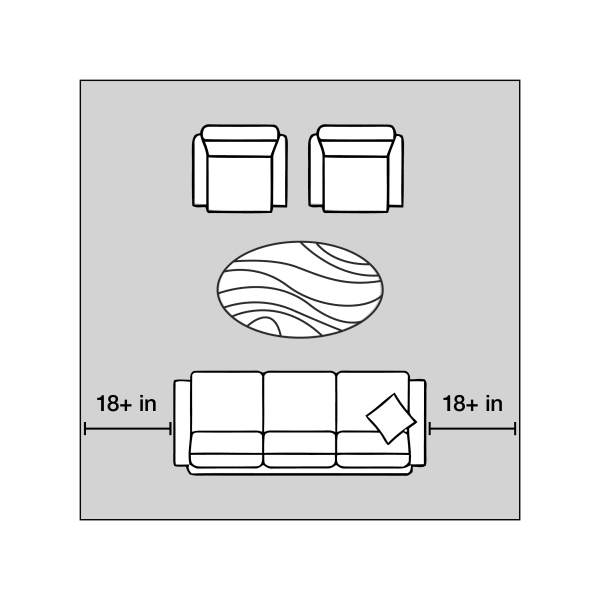
Anchor the Area
Create a cohesive seating zone that encourages guests to stay. Place the rug fully under all furniture with equal clearance all around, about 18"-24" on all sides. Make the seating area easy to navigate by allowing enough space to move in between main furniture pieces.
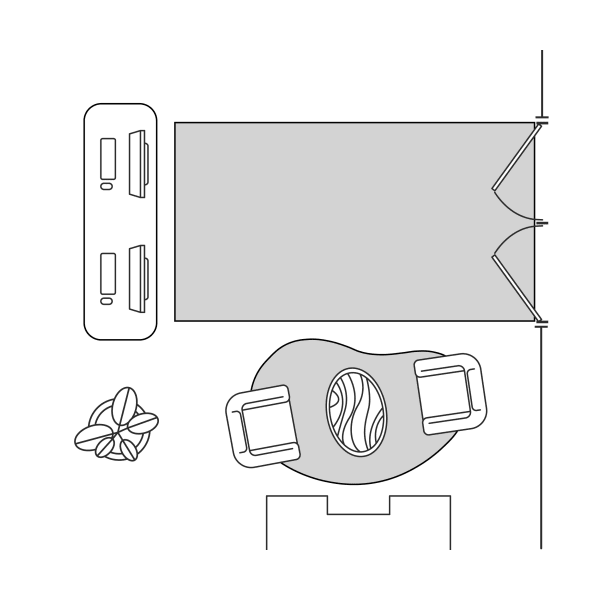
Define Zones
In large open areas, use separate rugs or contrasting shapes to divide zones. For example, highlight a reception desk with a rectangular rug directly in front of the desk (a visual "doormat") and place a square or round rug in the waiting area. This helps with flow and keeps large spaces from feeling empty.
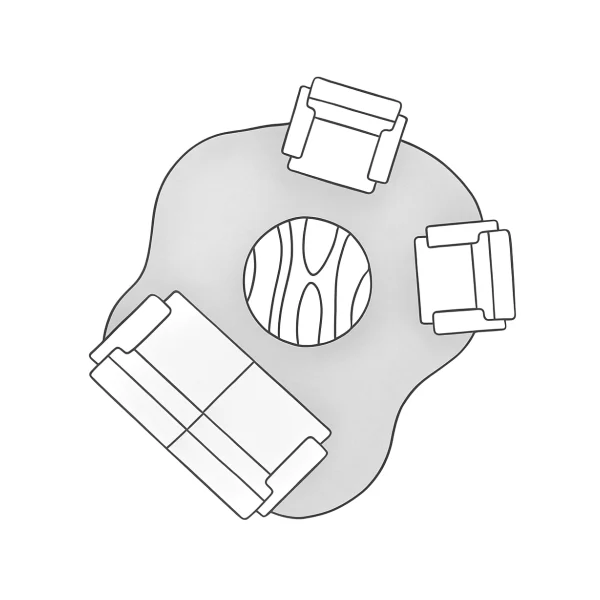
Organic Shaped Rugs
Try a uniquely shaped rug like a round or organic-shaped rug design to soften lines and add visual intrigue to your reception area, gently guiding foot traffic with a bespoke, high-design look. See link below for organic-shaped rugs.
Match Proportions
The size of the rug should match the room's proportions. The rug should be at least 2/3 the width of the room if it’s standalone. Don’t shy away from custom cuts to get it just right: Oversized rugs (12'x15', 13'x20', etc.) feel custom and luxurious in large lobbies and can be crafted to fit around or highlight architectural features, especially helpful in historic or mixed-material spaces.
Avoid This Mistake
→ Undersized rugs that only fit a coffee table. A too-small rug makes a space look unfinished. Plus, the exposed edges will only get battered and potentially create a tripping hazard. Always choose a rug that extends under all seating.
Executive Offices
Make a statement of confidence in executive offices with a large area rug, crafted from design-forward yet durable materials.
image: WHIDBEY | evening gray | Caroline Tryba Design
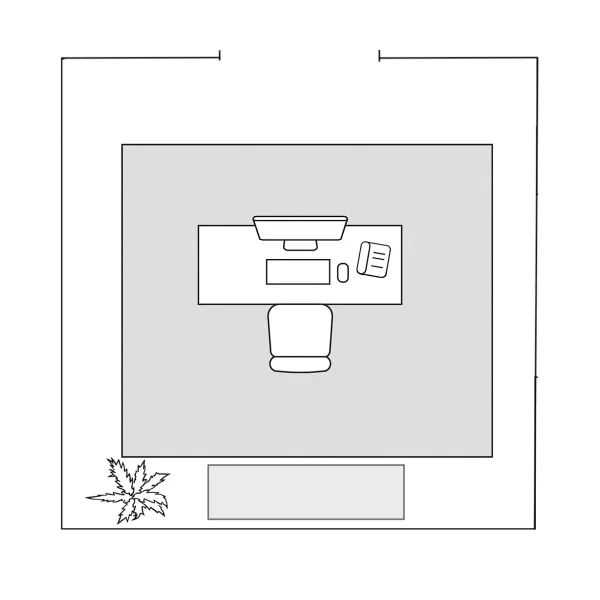
Focal Point
A rug underneath a desk should extend at least 24–30" beyond the desk chair’s back legs. This protects the floors and prevents the chair from rolling off the rug or its legs getting snagged by the edge. Avoid half-under rugs—either commit to full coverage or none at all under the desk.
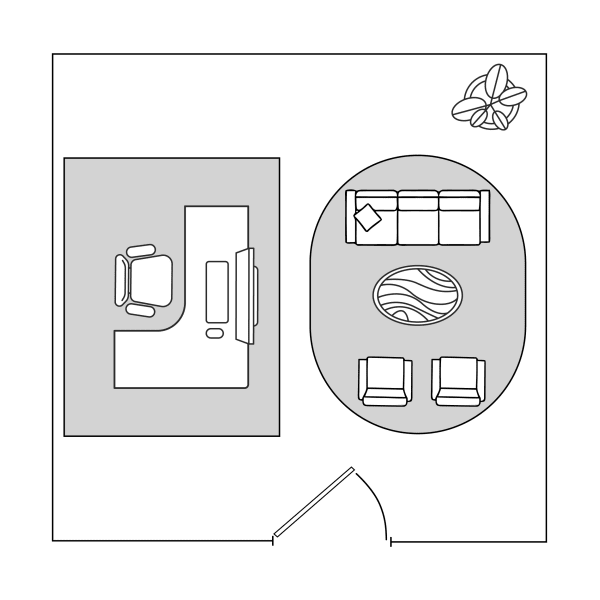
Establish Zones
Use area rugs to define “private work” and “public guest” zones: one under the desk, one under guest seating. This ensures a professional look while enhancing acoustic separation. Match rug styles or color tones for design cohesion.
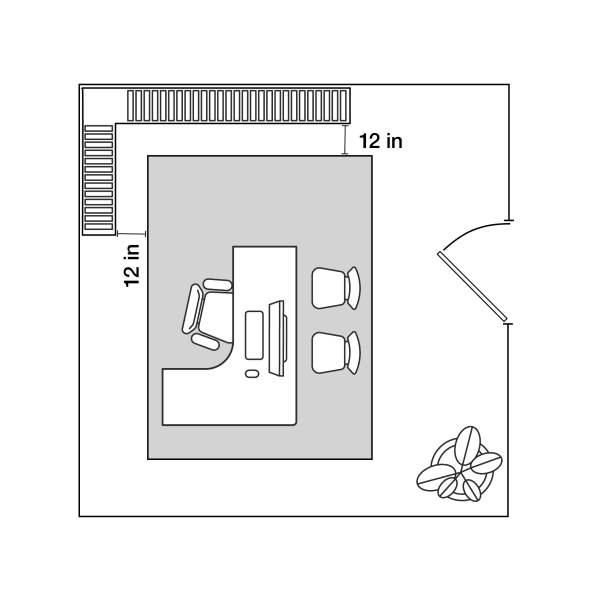
Balance
Balance the rug proportions with the room dimensions and furniture size. A rug that’s too small feels like a mat; aim to fill 60–75% of visible floor space and leave 12–18" of exposed floor between rug and walls.
Acoustics & Privacy
Dense rugs dampen sound during calls and in-person meetings. Add a rug pad for another layer of sound absorption. And if you have a seating area, consider something more plush, like a wool or wool blend rug.
Symmetry
Symmetry signals prestige. Align the rug based on furniture layout and built-in room features. Rectangular rugs work best with symmetrical desk and cabinet layouts. Square rugs suit compact offices with centered layouts. An organic-shaped rug adds softness in modern or minimalist spaces.
Avoid This Mistake
→ Not accounting for chair movement. Rugs that end right behind the desk chair cause rolling issues and wear at the edge. Extend rugs at least 24–30" beyond the desk chair.
Open Office Floor Plans
Rugs are an excellent tool for delineating zones, absorbing sound, and protecting the floor in high-use areas. Plus, they add warmth and visual texture.
image: LANGLEY | mesquite & mink | @ Design Well Spent
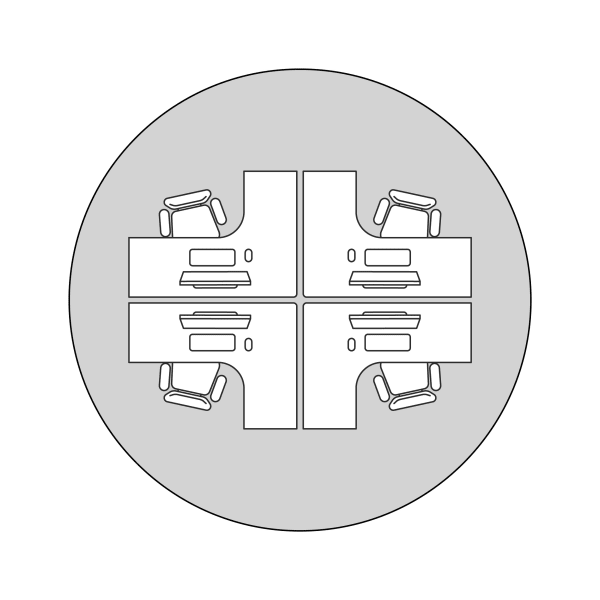
Desk Pods
Define desk pods or groups with area rugs, using them to form a visual team zone or "neighborhood." This helps break up visual monotony and adds subtle separation in open layouts. Choose durable, low-pile weaves for rolling chairs.
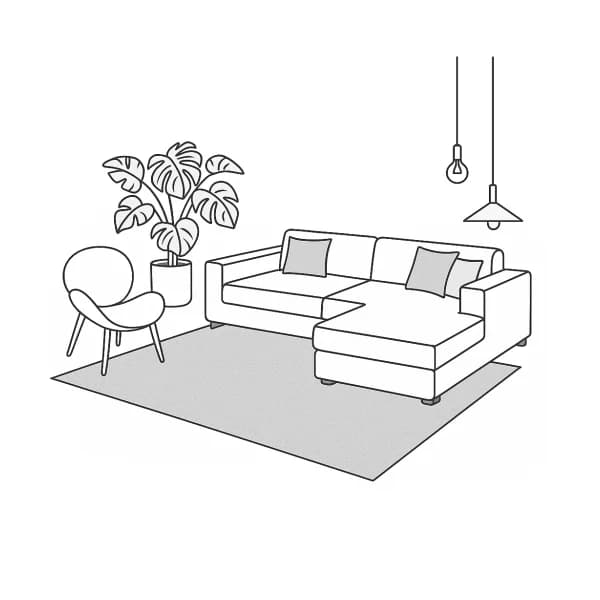
Collaboration Spaces
Area rugs centered under lounge seating or informal meeting areas absorb noise and add visual cohesiveness. Choose large rugs that extend beyond furniture edges by 12–18". Select rug colors based on the overall palette of the space, but consider using tone-on-tone patterns to add interest.
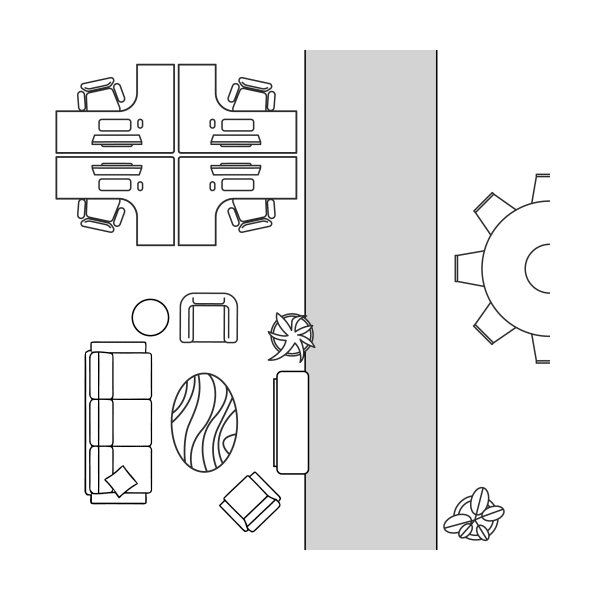
Create Pathways
Runner-style rugs placed between key zones (e.g., desks and kitchen) suggest pathways without using walls or signage. An easy way to guide foot traffic and add subtle visual structure to the open space.
Modular Rugs for Reconfigurable Spaces
Modular rugs or tiles are ideal for multipurpose areas because they can be easily replaced if damaged or if the layout changes in the space. Use modular carpet tiles to make a rug to fit any oddly shaped space.
Avoid This Mistake
→ Using wall-to-wall rugs instead of zoning. Wall-to-wall carpet removes visual cues that define teams and spaces. Area rugs or tiles help create structure without sacrificing openness.
Conference & Meeting Rooms
Acoustics matter in a conference room and rugs buffer sound for clearer conversations. Look for durable, low-pile weaves that can withstand rolling chairs and frequent traffic.
image: MEDINA | honey
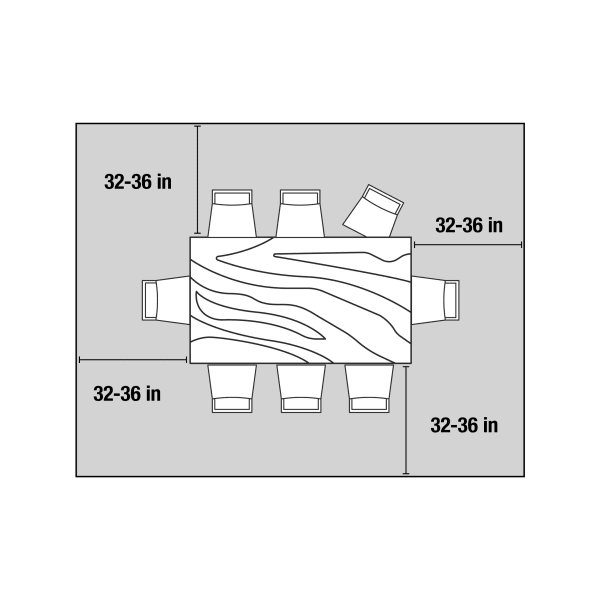
Fully Anchor the Table and Chairs
A conference room rug should extend at least 32" beyond the edge of the table in all directions. This prevents chair legs from catching on rug edges when pulled out. It also ensures balanced visuals even when chairs are in use.
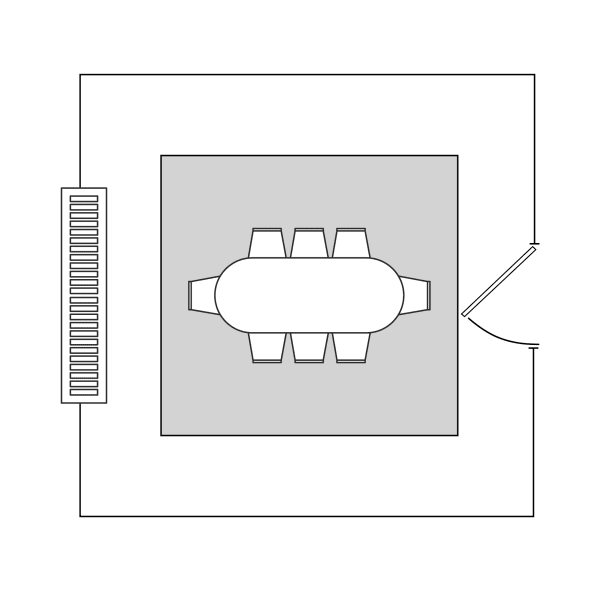
Frame the Room
Align rug with ceiling lights or built-in cabinetry for a sense of architectural order. Visible symmetry enhances a professional vibe, great for boardrooms or high-visibility meeting spaces. Leave a 12–18" margin of exposed flooring between rug edge and the wall.

Tech Integration
Take inventory of in-floor tech or AV ports. Place the rug so that it doesn't cover access. If not possible, order a custom rug with seamed cut-outs in the right spots. And keep rug edges low-profile for smooth cable routing and trip safety.
Soften Acoustics
Rugs dampen sound in hard-surfaced meeting rooms, an especially important consideration for rooms with glass walls or open ceilings. Select a flatweave, low-pile material for easy chair movement and add a felted rug pad for acoustic support.
Rug Shape & Table Form
For a cohesive look, match the rug shape to the table shape. For something less standard, an oval shaped-rug looks sophisticated under a rectangular table. If the room is rectangular and the table is round, choose a square rug to balance space.
Avoid This Mistake
→ Rugs too small for pulled-out chairs. A rug that only fits the table looks fine until someone sits down and their chair catches the edge. Extend rugs well past the table footprint.
Corridors & Hallways
Hallways and corridors are often overlooked, but rugs in these areas serve important purposes: acoustic buffering, safety, wayfinding, and visual warmth.
image: STAIN-RESISTANT SISAL | hallway runner
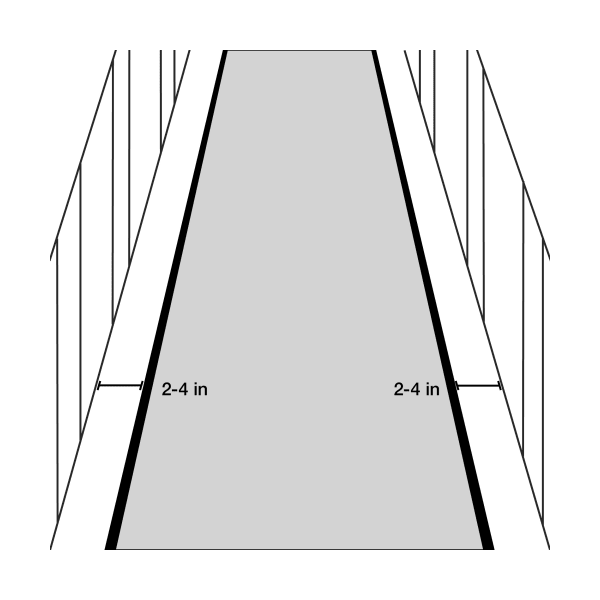
Clear Walk Paths
Leave 2–4" of exposed floor along each edge of the rug for a tailored look. The rug should run the full length of the hallway but never wall-to-wall. Be sure the rug and border height clear the swing of any doors and/or any transitions.
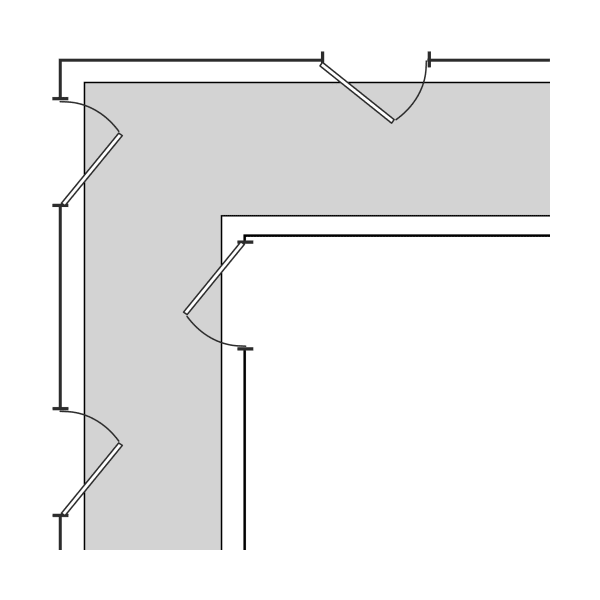
Custom Cut Rugs
For long, meandering corridors or odd angles, custom cut or irregular shaped rugs ensure full coverage with clean edges. Rugs with clipped corners or an l-shape might be the perfect fit.
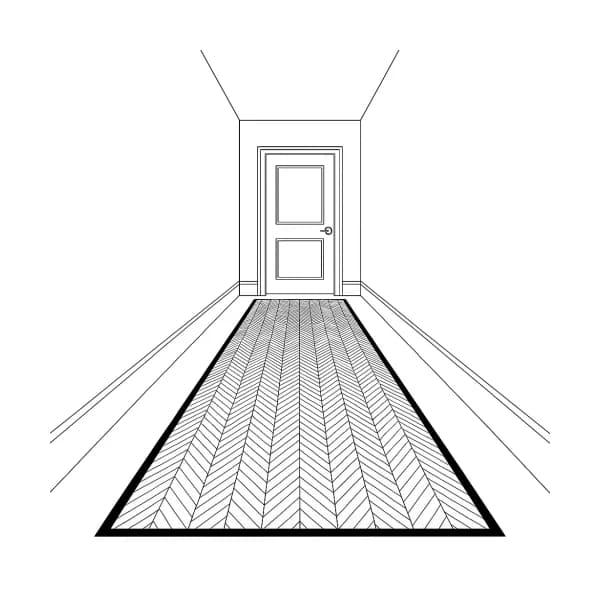
Patterns for Visual Rhythm
Long corridors benefit from pattern repeats—it helps prevent visual fatigue and can subtly guide foot traffic. Use soft geometric or tonal stripes to elongate or widen the space visually.
Ensure ADA Compliance
The minimum standard width for corridors is 36" but 48" or more is preferred in commercial settings. Subtract at least 2-4" from the rug's edges for exposed flooring and to frame the space. Select flatweave or low-pile rugs with non-slip backing.
Avoid This Mistake
→ Slippery or curling rug edges. Loose runners without commercial-grade backing are a tripping hazard, for feet, wheels, and canes. Always use flat, securely-backed rugs that lie flush. Adhere all rug edges to the floor if needed with carpet tape.
Entrances
In busy commercial entrances, durable walk-off mats not only trap dirt and moisture right at the door, commercial-grade polypropylene mats can be customized to include your brand's logo or business name.
image: TITAN | custom logo mat
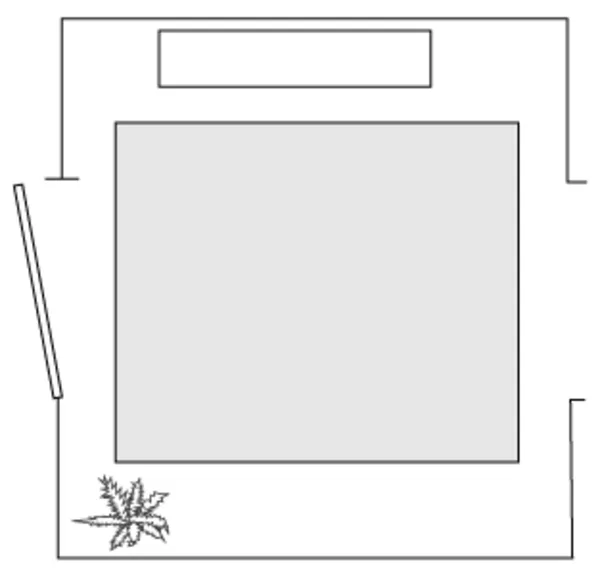
Cover the Zone
The entrance rug should span the entire width of the doorway and extend 6–8 feet inward. This gives guests 2–3 steps on the rug to shed moisture and debris. Avoid “postage stamp” rugs that are too small to be functional.
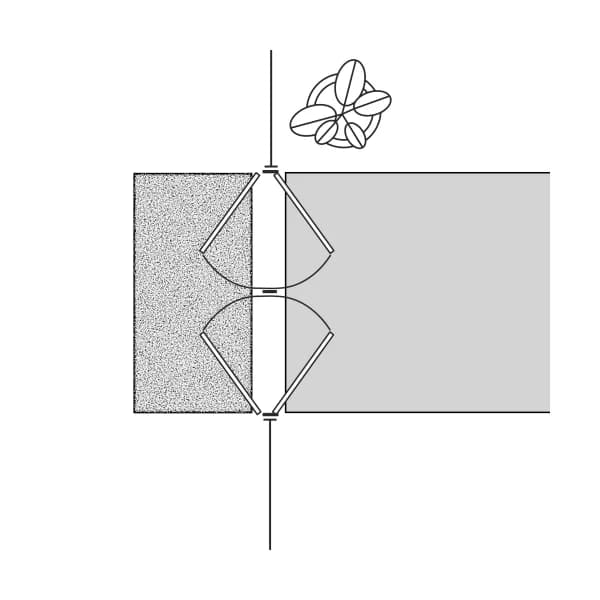
Walk-Off Mat + Rug
For commercial or office building entrances, pair your entryway rug with a scraper or walk-off mat that sits just outside the entrance. This extends the rug's life and prevents slippage due to moisture. Ideal for wet or snowy climates.
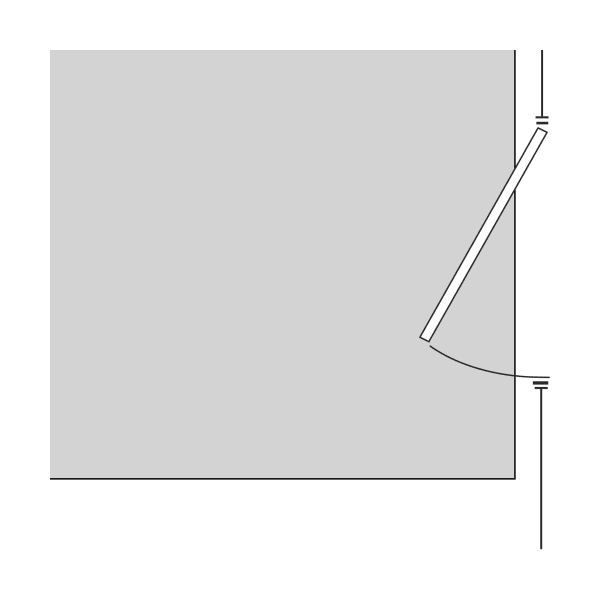
Door Clearance
Maintain 1–2" clearance between rug and bottom of the door. For outward-swinging doors, make sure the rug ends just before the sweep path. Always test with full door swing to avoid friction or curling.
Select Durable, Low-Pile Weaves for Heavy Foot Traffic
Use a commercial-grade synthetic material (like nylon, polypropylene or woven vinyl) with a low profile. Flat, tight weaves prevent dirt buildup and reduce tripping. Look for moisture-resistant backings and high slip ratings.
Avoid This Mistake
→ Using decorative rugs that can't handle moisture or wear. Specifiers often prioritize aesthetics over performance here. Entry rugs must be absorbent, low-profile, and durable.
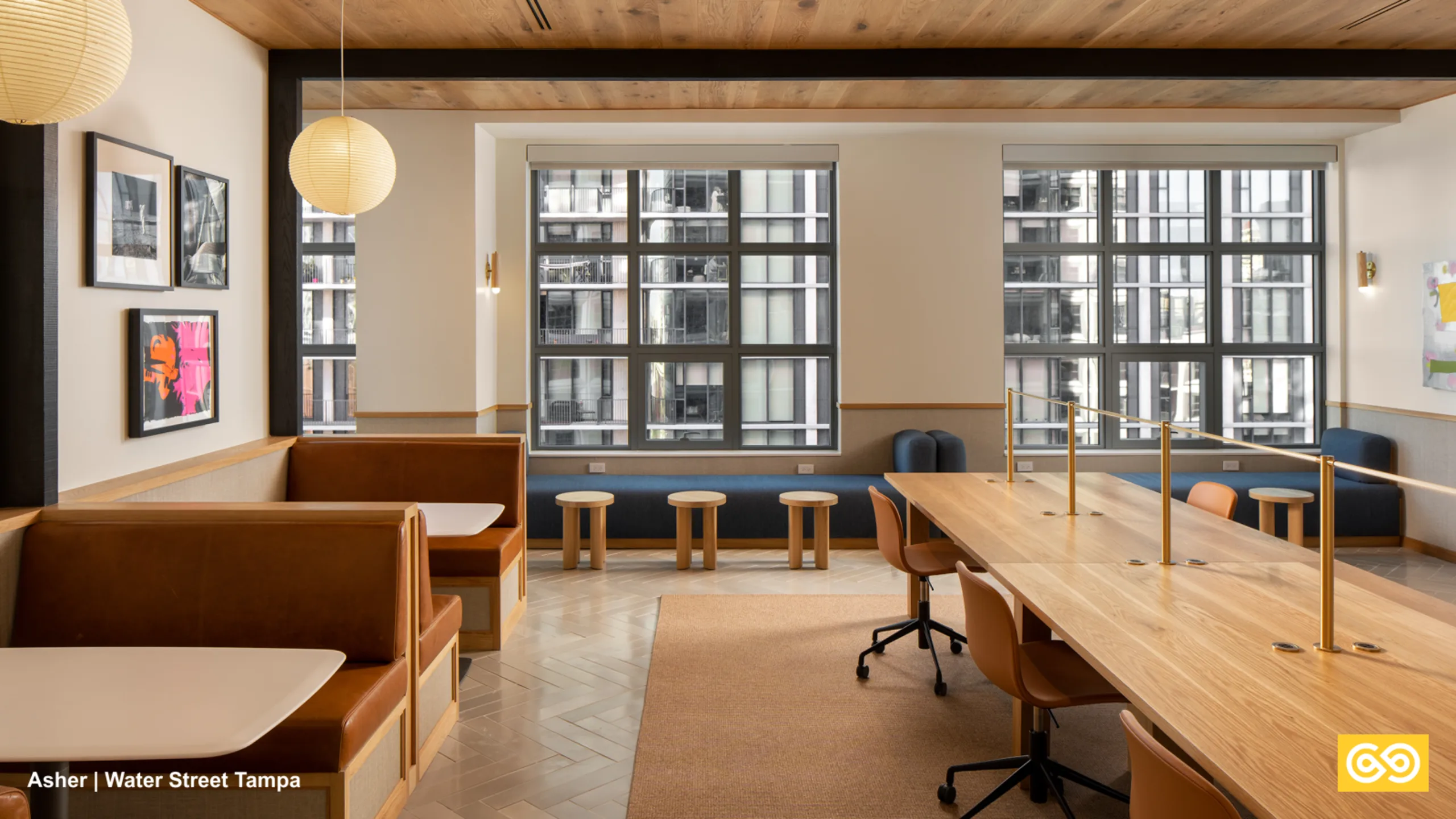
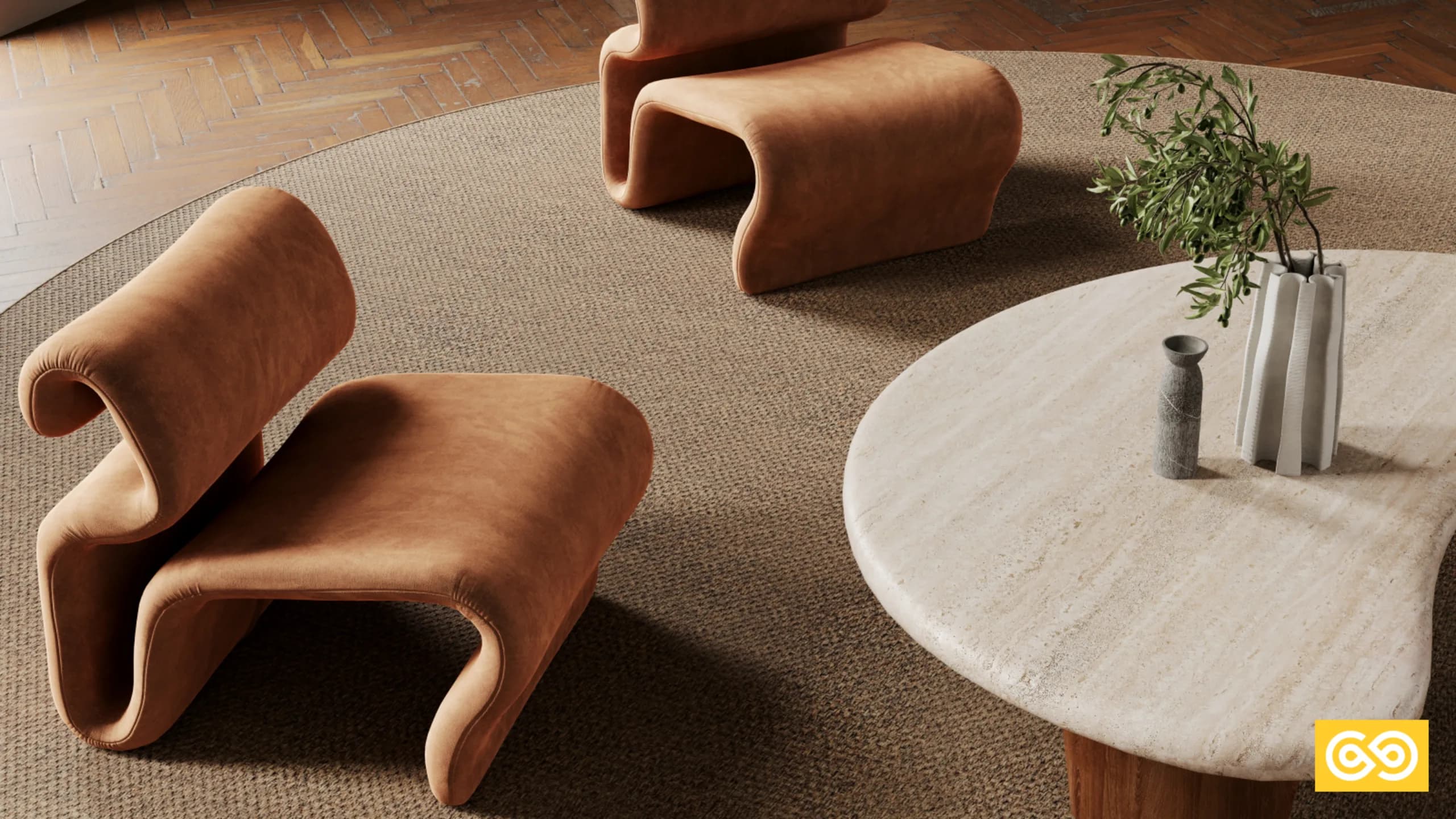
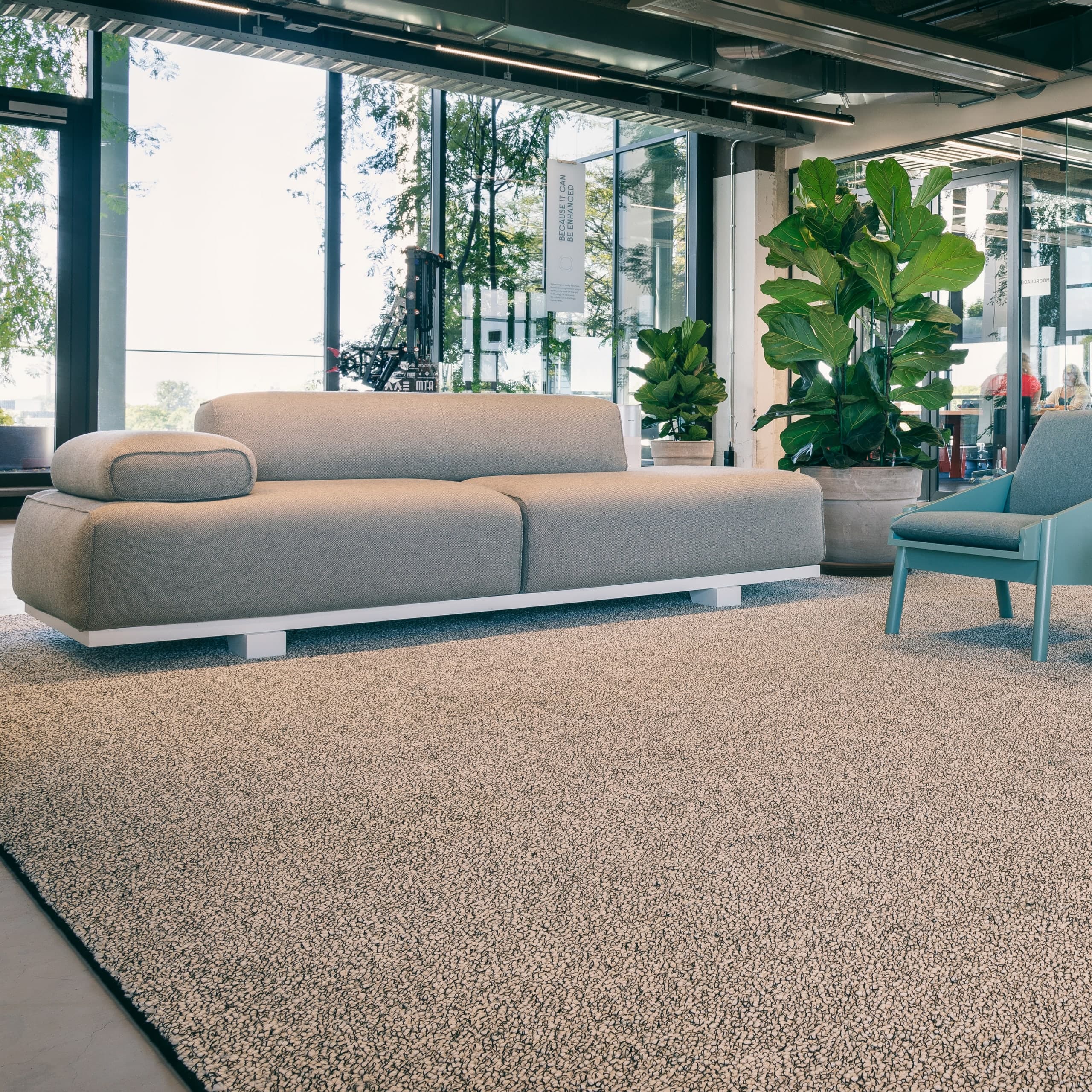
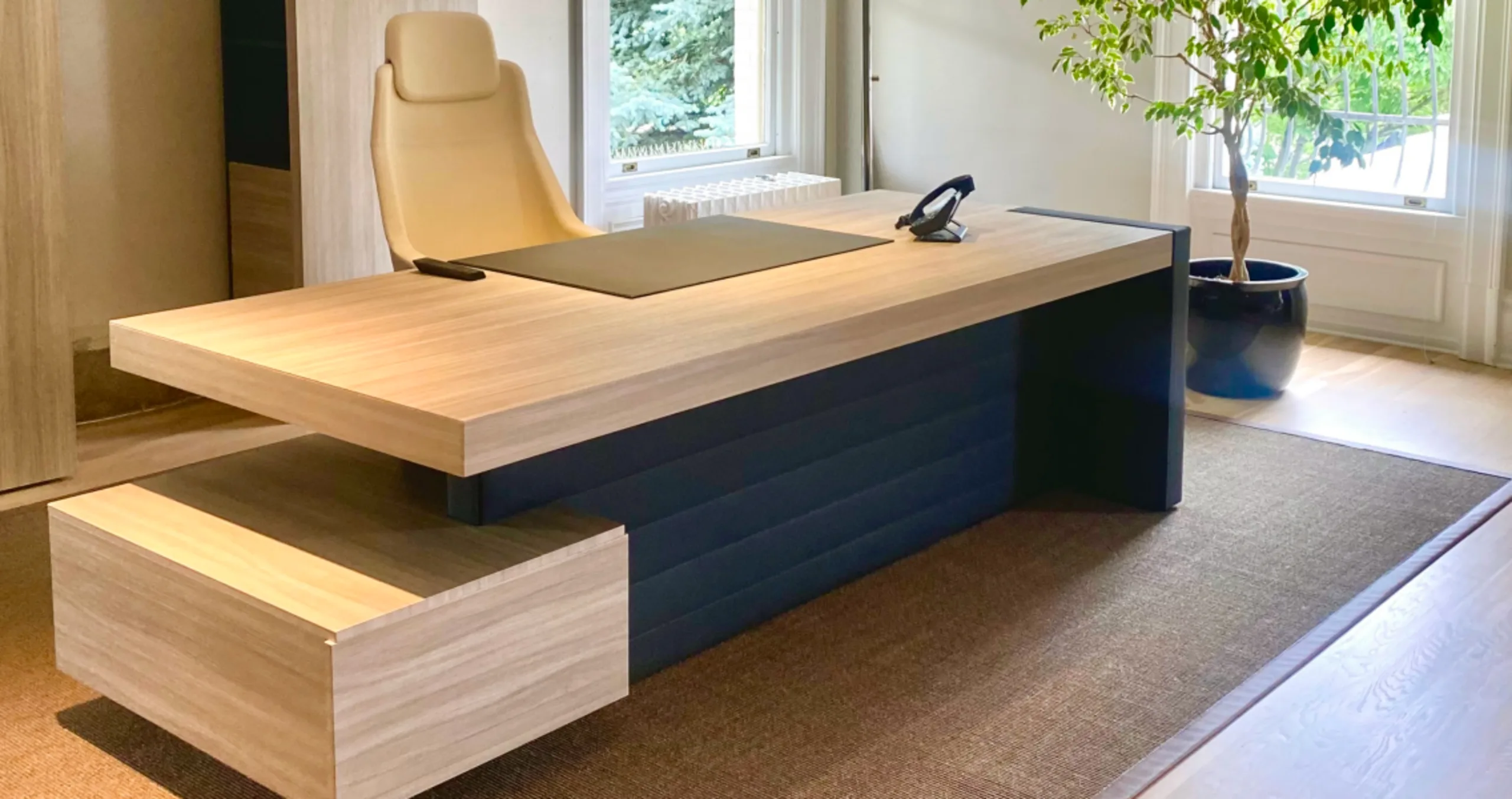
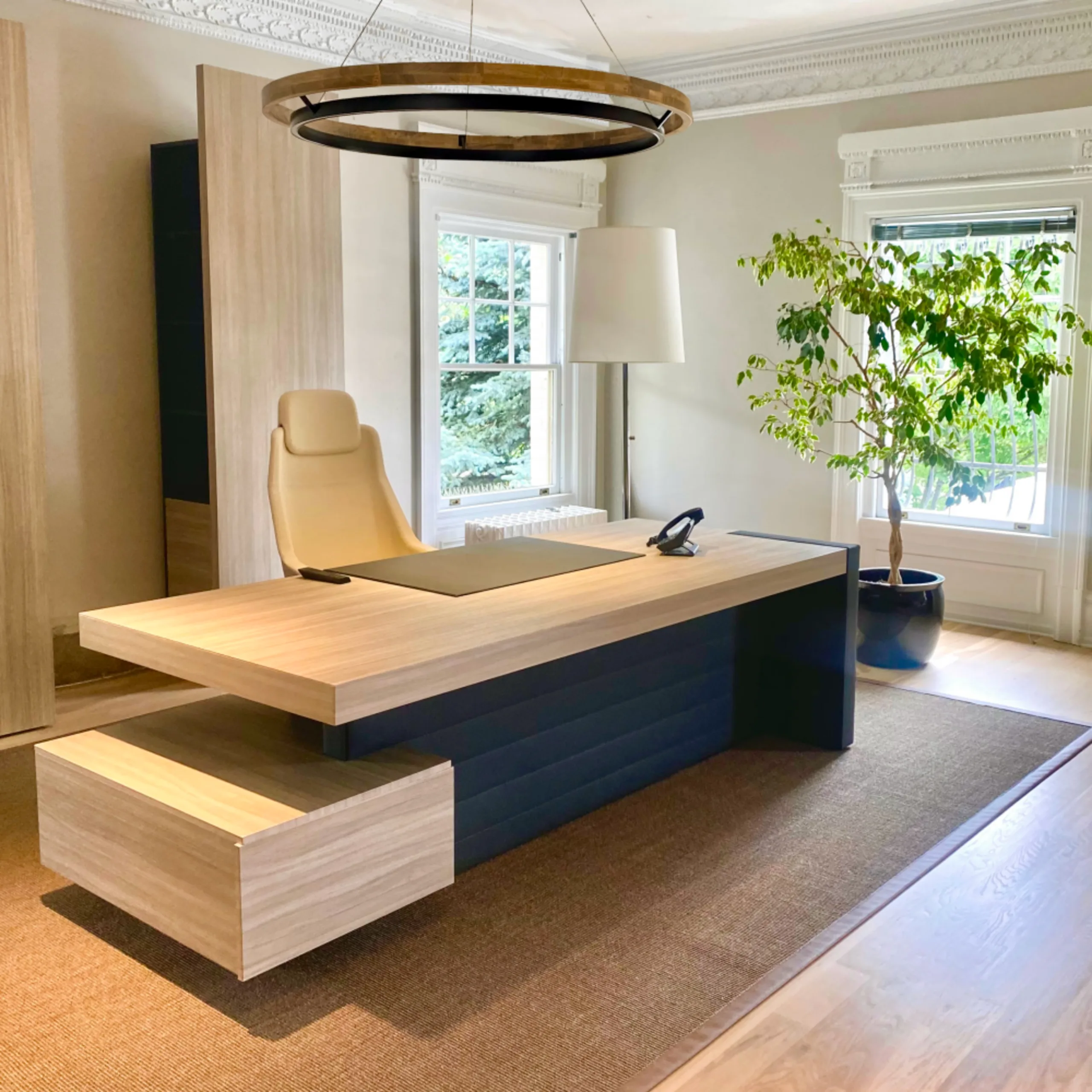
%2Ff_auto%2Fq_auto%2Fw_2560%2Fv1757015108%2FFlooring%2FVendors%2FSynSisal%2FBeauty_Image%2Flangley_mesquite_mink_SS_custom_designwellspent_CG_2_duosww.webp&w=2560&q=75)
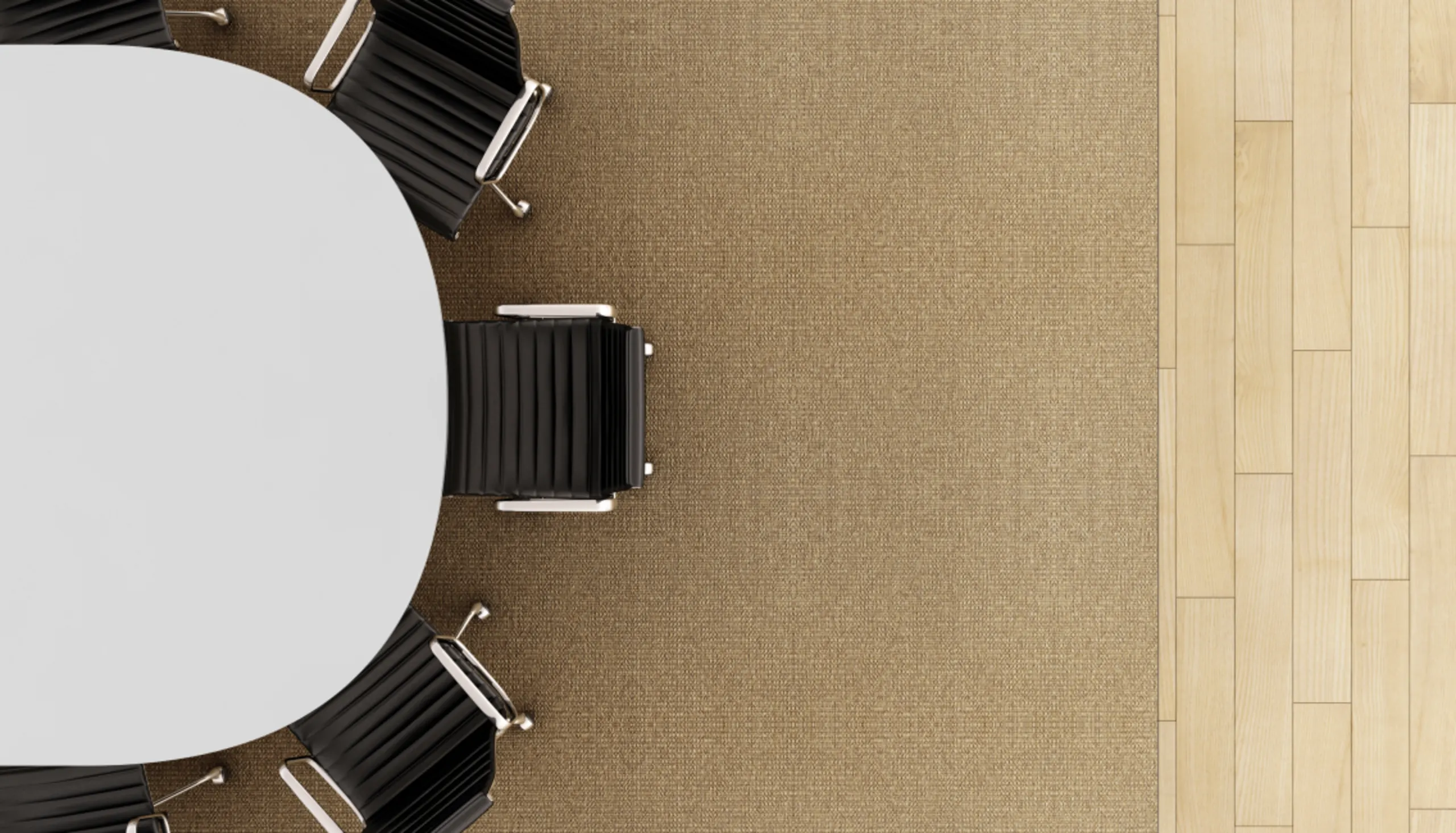
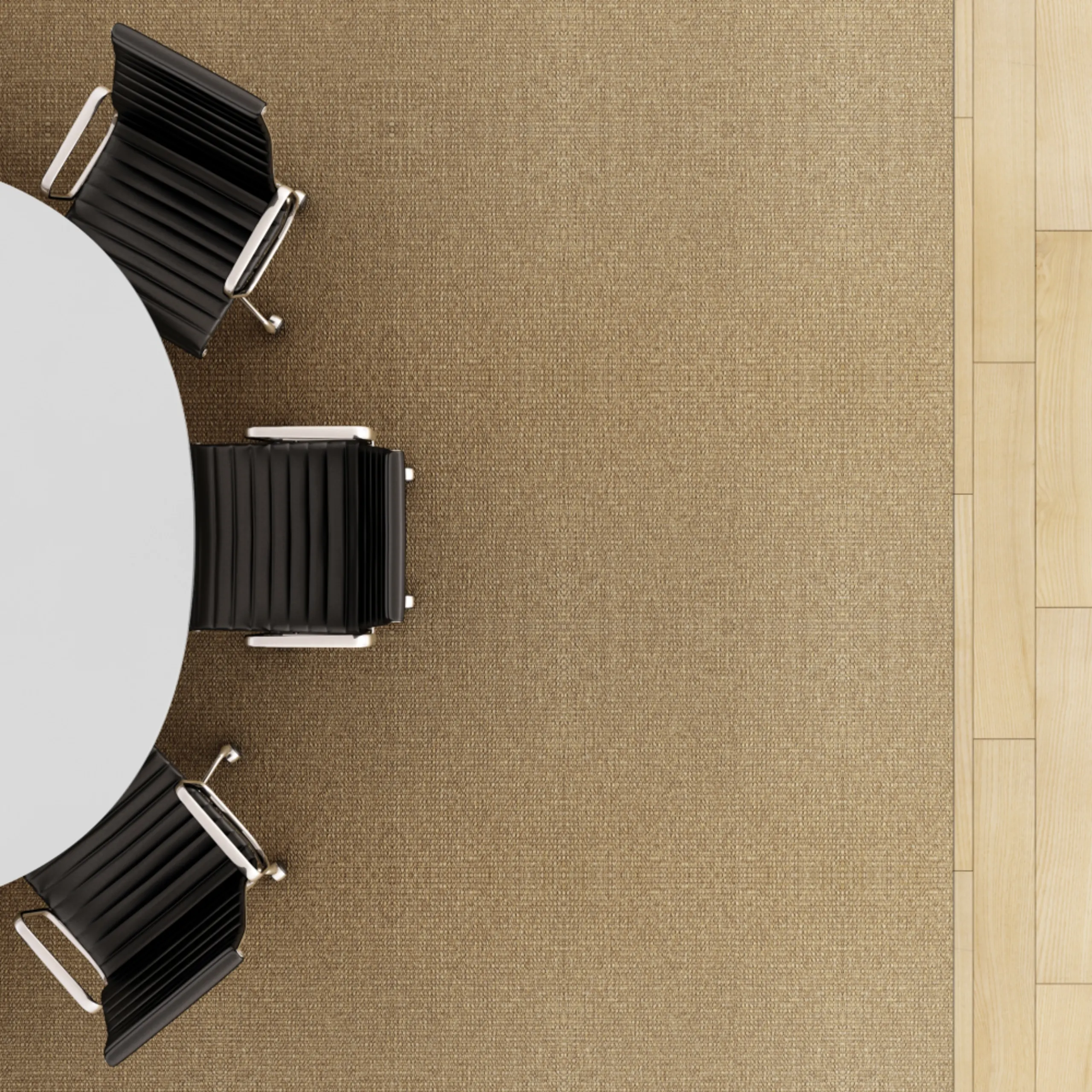
%2Ff_auto%2Fq_auto%2Fw_2560%2Fv1668270520%2FFlooring%2FVendors%2FDMI%2FBeauty_Image%2Fastute_lodge_sisal_DMI_hallwayrunner_5676b1.webp&w=2560&q=75)
